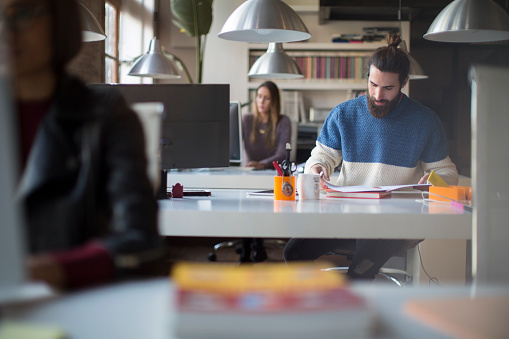Coworking Spaces: Are They Worth It?

Dec 02 | 2016

Rebekah Campbell is the chief executive of Posse, a location-based shopping recommendation app founded in Sydney in March 2013. In July, 2014, she wrote a blog post for the New York Times about her experience moving to New York to dive into start-up culture and develop her business. After getting sick of working on top of her partners in a tiny one-bedroom apartment, she decided to join a coworking space in New York’s famed Flatiron district. Inspired by the pace and people of the city, she sought out a space that would introduce her to other entrepreneurs, and give her a low-rent alternative to a long-term commitment office.
According to the Harvard Business Journal, “Coworking spaces” are “membership-based workspaces where diverse groups of freelancers, remote workers, and other independent professionals work together in a shared, communal setting.” Through ongoing research that involves interviewing coworking space founders and community managers, surveying coworking space employees and performing a regression analysis, researchers concluded the factors behind why people tend to thrive in coworking spaces.
First of all, people who work in these spaces put a lot of meaning into their work. Unlike corporate workers, they are entrenched directly into their passion. In turn, they are the ones to blame if things go wrong. Next, the environment is collaborative and diverse, meaning little direct competition, and plenty of opportunity to give each other advice and motivation. And even though it may look for a free-for-all, people that work in coworking spaces actually report feelings of more structure and community. Seeing all of those people around you hard at work will push you to work that much harder.
Sounds pretty idealistic, right? You have access to WiFi, a kitchen, meeting rooms, and can collaborate as you please. But on Campbell’s search for the perfect coworking space, it was a bit of a Goldilocks situation. The first one was too “strict and stuffy” and the next one was “the work version of hippie commune houses.” She found that a lot of these spaces had months-long waitlists. Though after a long search, she found what she deemed the best option for her team, and moved in.
At first, it was ideal. But shortly after, she started to notice some very significant problems. First of all, there was no guarantee that they could get the same desks everyday. There were a ton of rules. The noise-level was like a jungle gym, and Campbell often found people pitching her ridiculous ideas just for the sake of mock-collaboration. At the end of the day, she felt homeless.
While Campbell found that the coworking space didn’t work for her, Business Insider suggests that offices can take aspects of coworking spaces to make them more collaborative and productive. By including networking and social events, and rearranging some desks, offices can replicate this commune-like atmosphere without going overboard.
So the coworking space is highly debatable, but if you’re not one for the office, you can always try a coffee shop or your local library!










